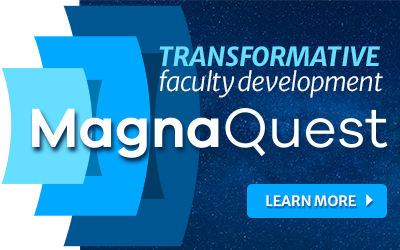The Academic Leader’s Role in Promoting Inclusive Excellence
What atmosphere are you creating at work? Institutional polices form a threshold for promoting access and equity, but it’s up to academic leaders to create an environment in which people feel creative, productive, and engaged—an idea known as inclusive excellence.
Proven Tools for Academic Leaders to Successfully Lead Change
Department chairs and deans find that campuswide and unit strategic plans expect them to be change leaders. Add on the complexity of engaging in processes that involve politics, negotiation, persuasion, and inspiration, and change leadership can seem overwhelming.
When Academic Leadership Comes with Baggage
The baggage we bring to work with us can take a variety of forms. It could occur because we applied for our positions as internal candidates and suddenly find ourselves as bosses of the very people who only a short time ago we regarded as close friends. It could occur...
Five Recommendations to Advance Careers in Enrollment and Retention Management
Whether you are an entry-level admission officer or an assistant or associate enrollment manager, you will, at some point in your career, desire to move to the next professional level, either at your current school or at another college or university. These five recommendations may help you make a successful...
The Power of Predictive Analytics for Student Retention
What if you could use data you already collect to identify which entering students are most at risk of leaving your institution, allowing you to target the most appropriate services to populations that need them? This is exactly what Eastern Connecticut State University is doing. Rhona Free, Eastern’s vice president...
Consumer Liability 101: Six Areas to Watch, Part II
While state consumer protection laws vary, there are certain defenses to liability that are common enough—and powerful enough—that all schools should be familiar with them. These defenses are (i) preserving and protecting your educational mission; (ii) acting in accordance with regulatory requirements; and (iii) for state schools, preserving and protecting...
Consumer Liability 101: 6 Areas to Watch, Part I
Students considering litigation against colleges and universities have powerful legal tools at their disposal: state consumer protection laws. These laws were designed to empower states and consumers to bring claims against companies that act unfairly or deceptively. Although the requirements of these laws vary from state to state, most allow...
Hallmarks of Excellence in Online Leadership
Online learning has “gone from a wild frontier to a more established professional [undertaking],” says Jay Halfond of Boston University, Senior Fellow of the UPCEA Center for Online Leadership and Strategy and Chair of the National Task Force on the UPCEA Hallmarks of Excellence in Online Leadership. As the field...
The Case of the Unevaluated Online Courses*
The story you are about to hear is true. Only the names have been changed to protect the innocent. This is the city. I work here. I’m a faculty developer. My name is Thursday, Joe Thursday. Explore this case and learn how to effectively evaluate online courses.
Using Motivational Interviewing to Engage Faculty and Facilitate Change
Motivational Interviewing (MI) is a collaborative communication style, developed in the field of clinical psychology, for strengthening an individual’s intrinsic motivation and commitment to change. Within an atmosphere of acceptance, compassion, and empowerment, people’s ambivalence about change is identified and explored by evoking their own reasons to change with respect...












